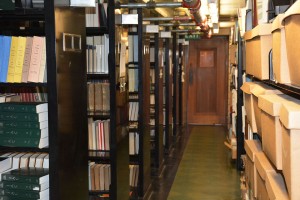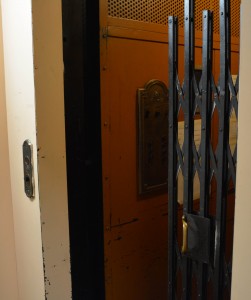The Indiana State Library is primarily a research library. Whether you are looking for United States Congressional hearings, researching the War of 1812, or looking for the latest information on environmental science, the material is probably in the closed stacks.
Like most research libraries, the Library of Congress, Chicago’s Newberry Library, and the William H. Smith Library at the Indiana Historical Society, the books and manuscript material are stored in areas that are not accessible to the public. The State Library and Historical Building first opened in 1934, and it featured the latest construction of the day with the main book stacks divided into seven-stories in this four-story building.
The latest in automatic electric elevators with pushbutton-control were installed, and the stacks were arranged as an integral part of the heating and ventilation system.
As the collections grew and the building was expanded more rooms were added and the new book stacks are now moveable, allowing for even greater use of space.
Whether the material is on open or closed stacks, our skilled librarians are happy to assist both the novice and professional researcher.
This blog post was written by Marcia Caudell, Reference Librarian, Indiana State Library. For more information, contact the Indiana State Library at (317)232-3678 or “Ask-A-Librarian” at http://www.in.gov/library/ask.htm.




